It’s fair to say that we haven’t seen as much excitement and interest around a DJ equipment launch as we have around the AlphaTheta XDJ-AZ for a long, long time. It also goes to say then that it’s been quite awhile since we’ve had this many questions about any DJ gear launch from our students.
So as a service to our students and the wider community (and to save us having to answer these questions again and again in our forums and courses quite so much), we’ve gathered the most popular questions for you here.
You can see them in video format and written. The video’s especially useful because we answered questions from students and subscribers as we went along, and there are many more hints, tips, clarifications, and even a couple of corrections that you can find in the comments, too.
Watch the show
Prefer me to talk you through this? In this video, a recording of a live show from the Digital DJ Tips YouTube channel, I talk you through everything in this article, and we take questions from our community on the subject.
This is a very expensive unit and a considered purchase. So hopefully if you’re trying to decide whether it’s right for you, you’ll find answers to all your questions here. But if you don’t, please feel free to ask. We’re here to help, and you can rest assured that your question is something someone else is going to want to know the answer to as well – so please don’t hold back.
AlphaTheta XDJ-AZ: All Your Questions Answered
Is this basically the replacement for the XDJ-XZ?
Yes, exactly. That’s the best way to understand it. They’ve taken everything people loved about the XDJ-XZ, which was a lot, and corrected all the shortcomings, the biggest one being that the XDJ-XZ only had two-channel standalone. The new unit adds a bigger screen, full four-channel standalone, and generally updated features, while keeping most of what people loved about the XDJ-XZ.
So why have they removed features like the send output, two of the four analogue inputs, and the Ethernet switch?
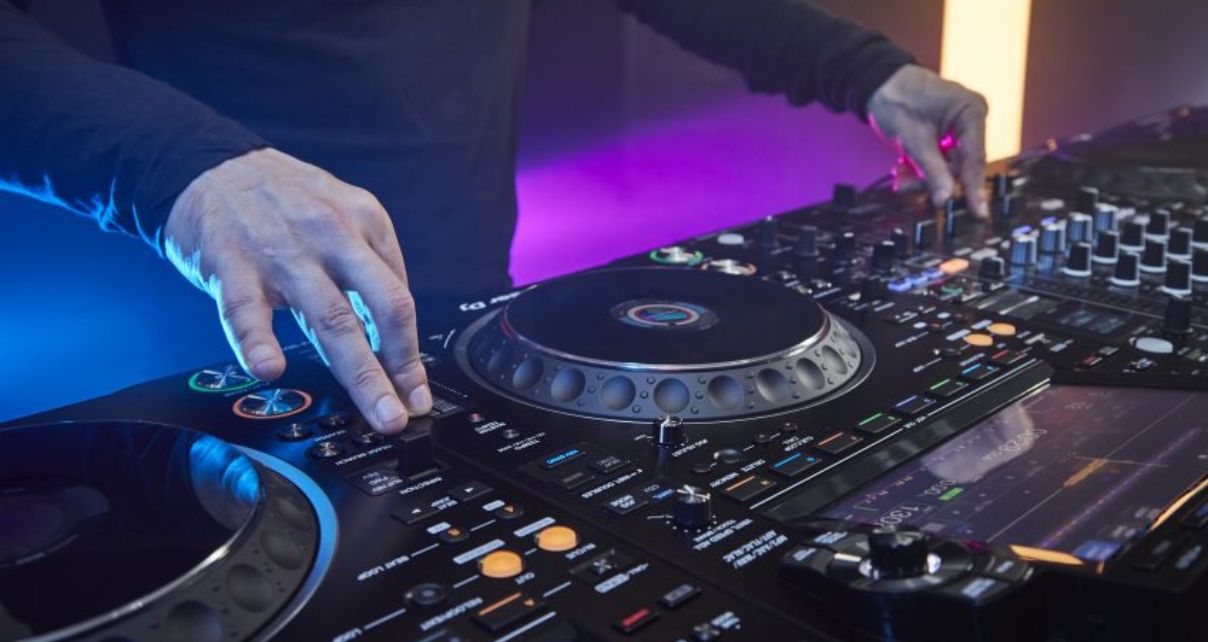
Of course, we don’t have the answer to that, but we suspect it’s because they’d identified these as features that not many people used, and they had to get the unit to come in under a certain cost. Either that, or they didn’t want to cannibalise sales of the true pro CDJ-3000s and DJM-A9.
DJ like a pro using ANY gear: The Complete DJ Course
Note that you can still use Pro DJ Link to connect and control two channels of the unit with the company’s media player. However, you’ll need to use an external Ethernet switch in order to do so, which makes it comparable to the way you set up a similar arrangement using Pro DJ Link with the CDJ-3000s and DJM-A9 mixer.
Does it have stems?
In its main standalone mode, no, it doesn’t have stems; no standalone unit has stems. Previously, Denon DJ’s Prime 4+ had a very early beta of stems, but they soon dropped it when people realised the sound quality was below acceptable. No one’s ever put one on a standalone system since then, so the short answer is no.
However, when used with Serato as a software controller, you can indeed use stems by switching out a pad mode of your choice to control Serato’s stems. With Rekordbox, it’s a bit more difficult because there are no dedicated buttons. It might be possible to map the Rekordbox controls, but we haven’t tried that.
Can I also use it with DJ software? Do I need to buy or pay for that software?
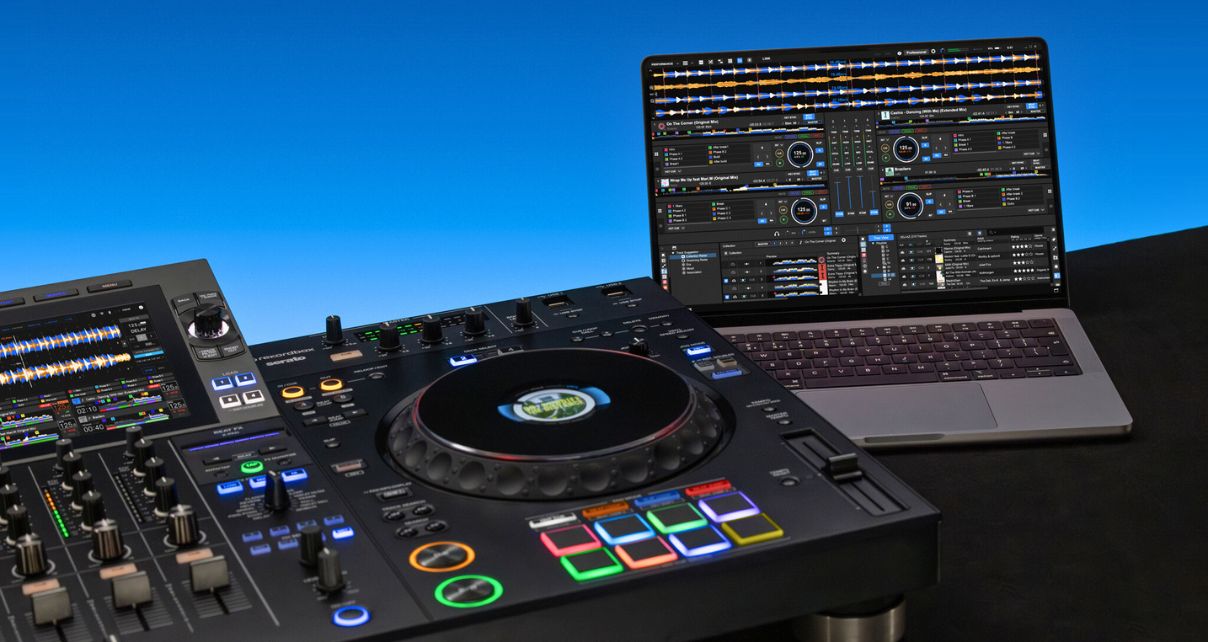
Out of the box, it works as a software controller for the company’s own Rekordbox software for free, and also with Serato DJ Pro for free. We imagine that soon enough it will work with VirtualDJ, but you’ll have to own that software or subscribe to it in order to use it with that platform.
Note that for some advanced features of both Serato DJ Pro and Rekordbox, you will need to pay or subscribe. In the case of Serato, the biggest feature missing is their Pitch ‘n Time key shifting expansion pack. And in the case of Rekordbox, if you want to use the cloud features, you’ll be paying a subscription in order to do so. There are higher tiers of Rekordbox that contain more features, however, most of them you can live without.
Can I use it with external effects units/samplers like the DJS-1000?
It’s not ideal anymore because of the removal of those send sockets, meaning you can’t send individual channels to the sampler, effects units, and so on. The only way to do this would be to put the effects unit or sampler across the master output and then feed it back into one of the external inputs, but that’s not ideal. So the short answer is no.

Can it analyse tracks “onboard”?
Kind of. While it can indeed analyse your tracks for beatgrid, key, and so on, the best way to use this unit is still to have a master library, which you take care of away from the unit itself on a laptop. However, if you are just plugging in a USB drive with a pile of unanalysed music on it, you’ll find the unit deals with it much better than the previous unit did.
I hear it’s only got Beatport as a music subscription/streaming service. Are other services coming?
The company has categorically told us that yes, other services are coming – but they also told us that Beatport would be coming for the previous Opus Quad system, and that hasn’t arrived as of today.
Read this next: AlphaTheta XDJ-AZ vs Pioneer DJ Opus Quad
So I wouldn’t buy the unit expecting other streaming services to be added. If they are added, then you can expect the usual suspects, namely Beatport, SoundCloud, and Tidal.
Can I use decks 3 and 4 for DVS?
Yes, you can. When DJing with software, decks three and four can be used with turntables for DVS control, leaving decks one and two controlled by the built-in jogwheels.
One thing I don’t like about the high-end controllers from this company is that they have power bricks. Is that the case with this unit? Or does it have a standard IEC lead?
The good news here is that, just like the XDJ-XZ before it, this unit has a standard power lead with no external transformer.
Has it got two computer USB sockets for easy software switchover?
No, unfortunately it only has one – a single USB-C as opposed to the single USB-B on the previous unit. We guess that the designers felt this wouldn’t upset people, as this is mainly a standalone unit with software control a secondary feature. But of course, if venues are looking to install it instead of the separates, then it could be a concern.
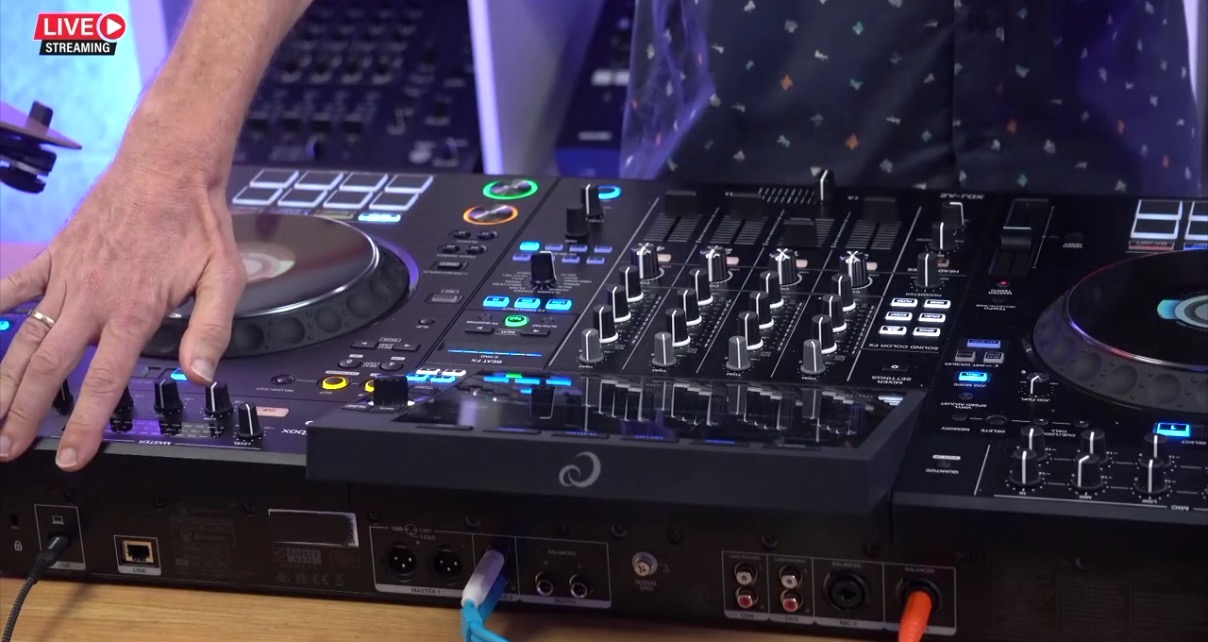
One good piece of news here, though, is that switching over with USBs is easier because the unit will load a whole song at a time, so both USBs could be removed for that length of time. So it’s swings and roundabouts on switchover features. One way around this would simply be to have a couple of songs on a USB to use when switching between DJs who need to share the USB port around the back.
Why the 3-1-2-4 numbering on the decks?
This can definitely seem strange at first glance, but the reason is this: in professional set-ups, the middle two channels are the main two channels, with the exterior two channels being the ones that are used for secondary purposes. Therefore, the middle two channels are normally labelled one and two. As this is a hybrid unit with definite club leanings, that’s carried across into the numbering system used here as well.
If this is meant to be aimed at the club DJ crowd, unlike the Opus Quad, which was aimed at the mobile DJ crowd, why does the Opus Quad get the club-style hot cue buttons above the jogwheel, but this keeps the controller-style pads beneath the jogwheel?
This is a very good question. And the answer is because the designers have chosen to do it that way! It probably helps to look at this as a universal unit that’s been designed to work in as many situations as possible. By keeping the pads like this, it retains both the look and feel of the previous unit, which, remember, was very successful, and also is an easier sell to people who might want to use it with software as well.
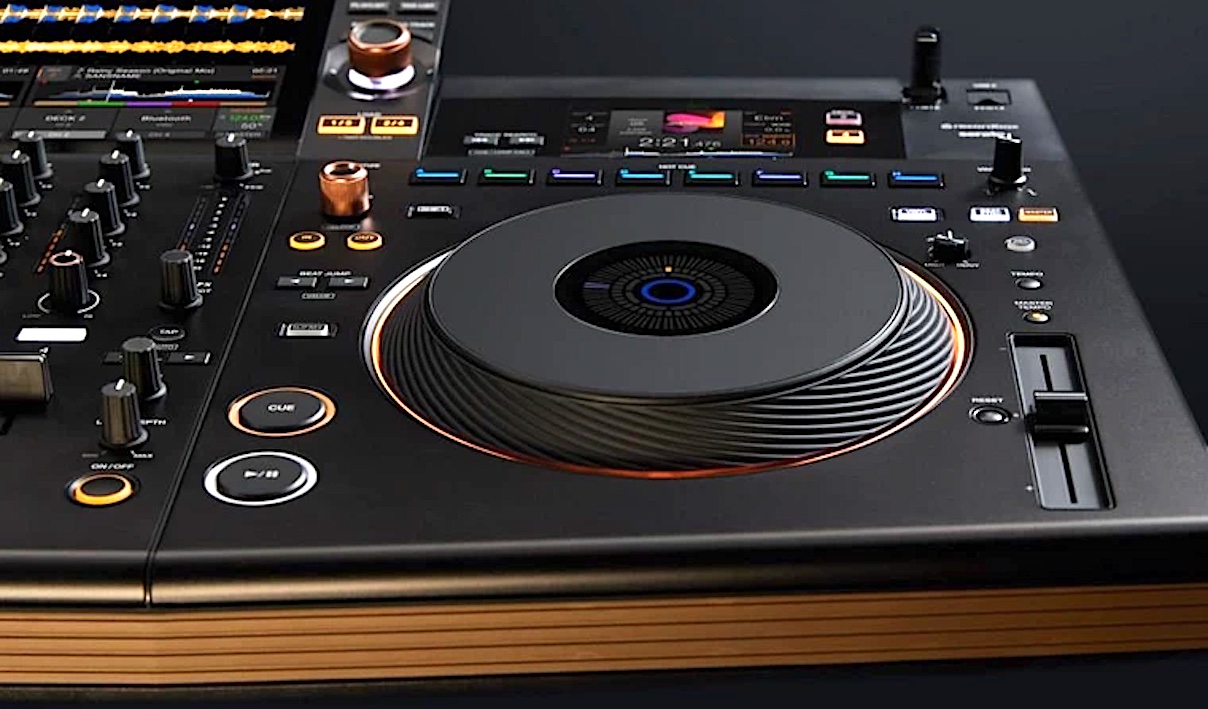
Ultimately, apart from the pads being beneath the jogwheels, everything else about this unit pretty much copies exactly the way club gear works – but it’s a fair point.
I thought this new name, AlphaTheta, was going to be for the more adventurous type of gear, and Pioneer DJ was going to be for the more standard gear. So why is the Opus Quad (which was definitely “out there”) labelled Pioneer DJ, and yet this one is labelled AlphaTheta? Doesn’t seem to make sense.
Again, as a DJ school we can only speculate, but our view is firmly that every single piece of equipment from now on will be labelled AlphaTheta from this company, and that Pioneer DJ as a brand will fade away. Only time will tell on this, but ultimately it’s the same team making all of this equipment, and so if you can see past the brand and instead focus on whether the features are what you’re looking for, you’ll probably be doing the right thing.
Can the master EQ top right be set to isolator EQ, ie full cut?
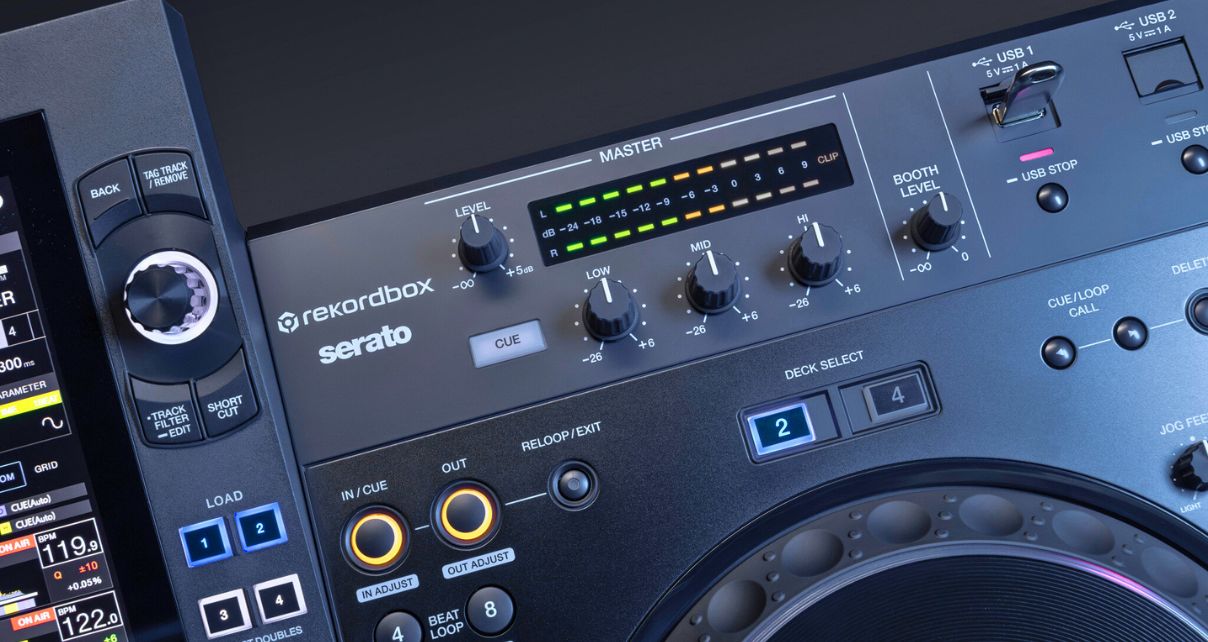
No, it is only standard EQ with no way of setting it to isolator. The good news is, though, you can set the four main channel EQs to isolator, should you wish.
I’m a professional DJ wanting to upgrade. Would you say that the XDJ-AZ would be a better option over two CDJ-3000s and a DJM-A9?
If money and space are no object, you’re maybe best just going for the club separates. We have several students who’ve done just this, and of course, that’s going to give you an exact copy of what you find when you play out. You’ll also have the ability to send and return from the mixer should you want to use a sampler or external effects unit, and more flexibility for inputs than you get with the XDJ-AZ. Plus, you get two separate screens, as opposed to everything on one shared screen with the XDJ-AZ.
However, for most DJs, most of the time, even for those who’ve got all the money in the world, the XDJ-AZ actually is probably the best bet. It’s easier to set up, less fuss, and again, for most people, it probably does absolutely everything you could possibly want. The XDJ-AZ is so close to using club gear that it likely won’t be an issue. If it were me, I would definitely go for the XDJ-AZ over the club separates.
Should I buy this or the XDJ-RX3, the Prime 4+, or the Opus Quad?
These are good questions, and we have separate comparison videos for these options that you’ll find on our YouTube channel.

In short though, the Prime 4+ from Denon DJ is still more versatile, but it doesn’t have the same operating system that most club gear has and indeed most standalone DJ gear out there. If that doesn’t matter to you, it’s a great choice, and better value as well.
Read this next: AlphaTheta XDJ-AZ vs Denon DJ Prime 4+
The XDJ-RX3 is extremely popular, and if you only want two channels and don’t care about key shifting, which is our biggest bugbear about that unit, it’s smaller, lighter, cheaper, and should do you fine.
And when it comes to the Opus Quad, you probably know in your heart which one you prefer because they look and feel very different, but ultimately they’re both pretty powerful. The biggest difference being that the Opus Quad doesn’t have Beatport streaming built-in.
I like the fact that this unit has SonicLink to wirelessly work with the new headphones that were released at the same time. But my question is, can it link wirelessly to the company’s recently released Wave Eight speakers as well, because they have SonicLink built-in too, right?
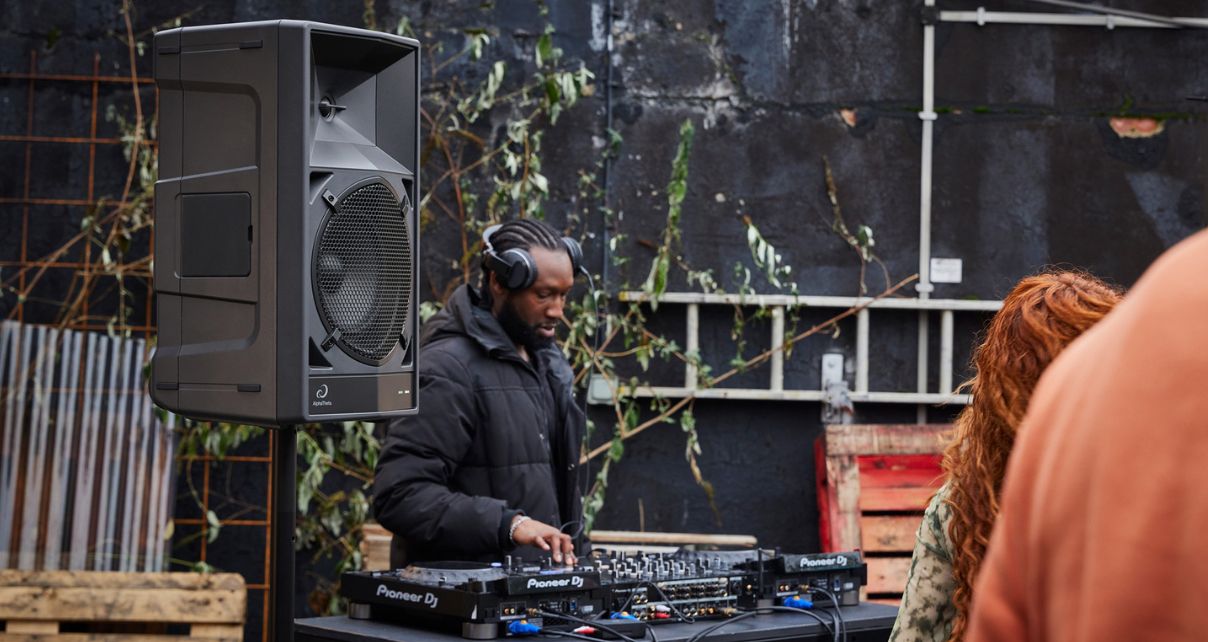
Yes, they do, and no, it can’t, which is a real shame. I would have loved to have seen that built-in, which would mean the most simple, fully wireless set–up you could imagine. Unfortunately, though, you’ll still have to use the wireless transmitter supplied with the Wave Eight speakers plugged into the output of this in order to set up a system that is wireless both to your headphones and to your speakers.
Do you have to restart the unit if you switch from USB to software?
No, you don’t. You can do this on the fly, and it is an advantage over other units where you do have to do this from other manufacturers. If it’s something you like to do, then bear that in mind.
The way you can switch between sources on these units, for me, is one of their big strengths, because there are so many possible ways to play music, from music subscription via Beatport to your own music in the cloud, to Pro DJ Link, software control over USB, or Wi-Fi, Bluetooth, and so on. Switching between all of these is very simple.

If I’m exporting music to a USB to play on this, do I have to use the new Rekordbox Library Plus? If so, it’s a deal breaker for me.
Rekordbox Library Plus is the new database used for the latest gear from this company, and that includes this unit. That means in order for this unit to read exported playlists on a USB drive, that’s how you’ll have to export them. The latest Rekordbox software, Rekordbox 7, will guide you towards doing that anyway.
The issue is that older gear, including some gear that’s not very much older, still uses an older version of the database. It’s not ideal, because things can get out of sync if you’re not careful, but ultimately Rekordbox Library Plus will be the database used going forward.
So at some point, if you’re keeping up to date with your hardware, you’re going to be using this all the time. So while it’s currently quite clunky and can get annoying and frustrating, it’s worth figuring it out and making the switch.
When it comes to recording your sets on this unit, can you record to a separate USB in the other socket? And can you record if you’re using Beatport streaming?
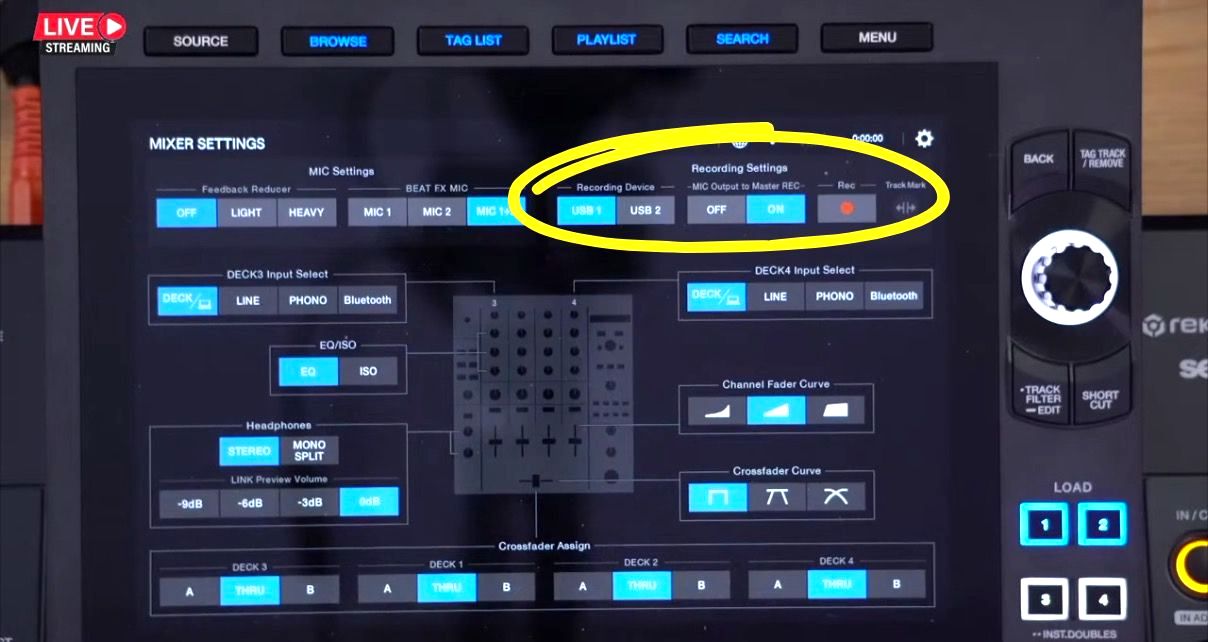
To answer the first question, yes, you can record to either the USB that’s already got your music on or to a separate USB. You get to choose when you hit the record button in the software.
But to answer your second question, unfortunately no. There is no DJ unit that will let you record when you are using a streaming platform such as Beatport because the licensing arrangements that the DJ companies have with the streaming providers don’t allow for that. Of course, there are other ways of recording, but the official way of using the USB is barred from you when you are using a streaming service as a music source.
Can you control lighting with it as you can with the DDJ-FLX10 and the Denon DJ Prime 4+? And can you fit a hard drive permanently to it like you can with some of the Denon DJ gear to hold your music?
No to both questions. If these are features you want, you’re definitely best off going for the Denon DJ option. Many mobile DJs especially do just that because for them it’s super useful to be able to control your lights from the same unit that you DJ from and to have all your music permanently installed in it.
Do the EQ knobs and tempo faders have the tactile feedback in the centre like older Pioneer gear did?

All the EQ knobs have a click at 12 o’clock to show you that the EQ is set to neutral. However, in common with much recent equipment, the pitch faders on the decks do not have a physical click. What they do have is a dead spot around the centre which sticks at 0% for a little while. So in practice, it’s actually quite easy to hit that spot even though you can’t feel it. It takes some getting used to, but in our view, it’s fine.
When you use the microphone, including talkover/push-to-talk, does it ignore this on USB recordings of your set?

Happily, yes, it does. There’s a setting where you can decide whether the microphone is recorded as part of any set recording you make. If you turn that off, then using the talk-over or push-to-talk buttons to quieten the music as you use a microphone doesn’t affect the volume of the music on the recording, and of course, the microphone itself doesn’t come across on the recording either.
Video review
This is the XDJ-XZ2 DJs have been clamouring for, and it could be the last DJ system you ever need to buy. Find out if it’s the right fit for your style of DJing in this full video review.
I want one / I’ve ordered one / I’ve got one. And now I want to know how to use it properly. Do you have any training on this?
Yes, happily, we do. For all major DJ gear releases, we release our extremely popular video manual and training tutorial courses that teach every single feature and demonstrate how to use it. In even better news, these are always completely free, and you’ll find them on our YouTube channel.
We’re currently preparing the training for this unit, but you can pre-register your interest by clicking this link, and then when it’s ready, we’ll let you know. Again, it’s at no cost to you.
Further training
While the training tutorial and video manual will help you understand your unit, there’s a big difference between understanding your hardware and being able to DJ properly with it. So if you’re brand new to DJing and this is your first unit, or you’re returning to DJing after a break and want to get bang up to speed with how it’s done today, then you should consider investing in our Complete DJ Course alongside the free training tutorial for this exact model. The Complete DJ Course has helped tens of thousands of DJs get up to speed with how DJing is done today and is a phenomenal investment in your DJing.
Finally, if you’re interested in using this unit as a Rekordbox software controller or as a Serato software controller, or you just want to learn more about the bigger Rekordbox platform that it lives within, then we have courses for both of those programs too, called Rekordbox Made Easy and Serato Made Easy. Click the links to check all of these out in our courses area.





